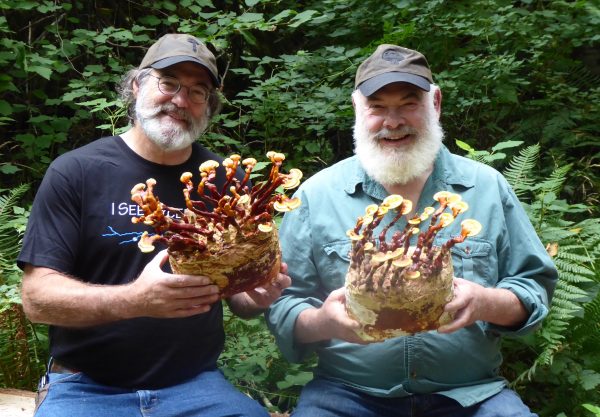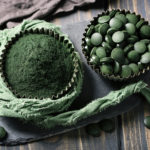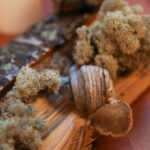My Life With Mushrooms, Part Two

My fascination with mushrooms took a new and different direction about 13 years ago (2005) when Daria Myers, then the CEO of the natural skincare company Origins, came to Tucson and asked if I would be interested in developing a line of products. I told her I knew little about skin care but could suggest novel ingredients that might work well. My first suggestion was to look at species of mushrooms with significant anti-inflammatory effects that might reduce skin redness and irritation. I gave Daria and Origins a list of species to test, including reishi mushrooms, cordyceps, and lion’s mane. They tested these, came up with a promising combination and began formulating them. This resulted in the Dr. Weil for Origins Mega Mushroom product line that soon became the company’s best sellers. (The Mega Mushrooms Treatment Lotion is a runaway best seller in China.)
Mega Mushrooms For Skin Care
The products really work – they yield noticeable results very quickly. Although we can’t make medical claims, the Mega Mushroom serum seems to be particularly helpful for people with rosacea, a condition that inflames and reddens facial skin. And we keep improving the formulas. A recent addition is chaga, a rock-hard fungus that grows on birch trees in the far north; it appears to reduce the inflammation that underlies many skin problems. It – and other mushrooms used in my Origins’ line of skin care products – also have a long history of enhancing health in general, by boosting resistance and promoting longevity.
Mushrooms For The Health Of The Planet
Mushrooms may offer us even more exciting possibilities in the future. In his book Mycelium Running: How Mushrooms Can Help Save the World, my longtime friend, mycologist Paul Stamets, writes about the important roles mushrooms may play in planetary health. The key to this is the mycelium, the network of fungal threadlike cells in soil that interfaces between plant roots and nutrients. A mushroom is the reproductive structure or fruiting body of the mycelium. This far-reaching cellular web creates new soil as it breaks down and recycles plant and animal debris. What’s more, the mycelium and plants – including trees – actually communicate with one another in what Paul calls “nature’s internet”; others speak of this as the “Wood Wide Web.” Scientifically speaking, this network is known as the mycorrhiza, from the Greek words for fungus (mykós) and root (riza). Incredibly, it enables plants, trees and the mycelium to trade nutrients and actually warn each other about insect attacks and other threats to their health. We haven’t known about this relationship for very long, but it is estimated to have been in existence for more than 450 million years.
Paul sees uses for mycelium that go far beyond its natural role. He has shown that mycelium can decompose toxic wastes, filter pathogens from watersheds, improve and enhance the health of forests and gardens. He has demonstrated that oyster mushrooms can clean up oil spills, reducing contaminants from 10,000 to 200 parts per million in about four months. And he has described his use of mycelium from Metarzhizium fungus to rid his house of carpenter ants. This particular species parasitizes certain insects. Paul tricked the ants into eating the mycelium before it formed spores. Once the spores were released, they infiltrated the entire colony and mummified the ants. Paul’s house has been free of these pests ever since. Best of all, this natural weapon is harmless to humans and the environment, unlike the toxic pesticides now in use.
Mushrooms Can Save Honey Bees
Mushrooms may also help save honeybees, which as you may know have been in big trouble in recent years, dying off in alarming numbers from Colony Collapse Disorder. The causes are multiple, ranging from viral infections, pesticides and other stressors, including Varroa destructor, a parasitic mite. When Paul Stamets first saw bees in his backyard sipping nectar from mycelium in his garden, he wondered if mushroom extracts could protect them from all of the harmful influences in the environment.
He partnered with Dr. Steve Sheppard, Chair of the Department of Entomology at Washington State University and an expert on the evolution and genetics of honeybees. So far, they have seen that extracts of reishi mushrooms and chaga can reduce the viral burden on bees by more than 99 percent and that extracts of another species slashed by more than 1000 times the incidence of infection with deformed wing virus. The studies have also shown that a mushroom extract that is lethal to termites has the same deadly effect on the bee- killing Varroa mite. It appears to be harmless to the bees.
The emerging knowledge about mushrooms and the mycelium is exciting and promising, suggesting safe new approaches to some of the most serious problems that affect our health and the health of our planet. I hope you will become more interested in mushrooms. They offer us so much more than good food.
Andrew Weil, M.D.
(I discuss the use of mushrooms in a medical setting, the way I use them in my culinary endeavors, as well as my exposure to mushrooms through my travels in “My Life With Mushrooms, Part One.”)
Source:
forbes.com/sites/grrlscientist/2017/06/05/can-a-mushroom-save-honey-bees/
More information:













